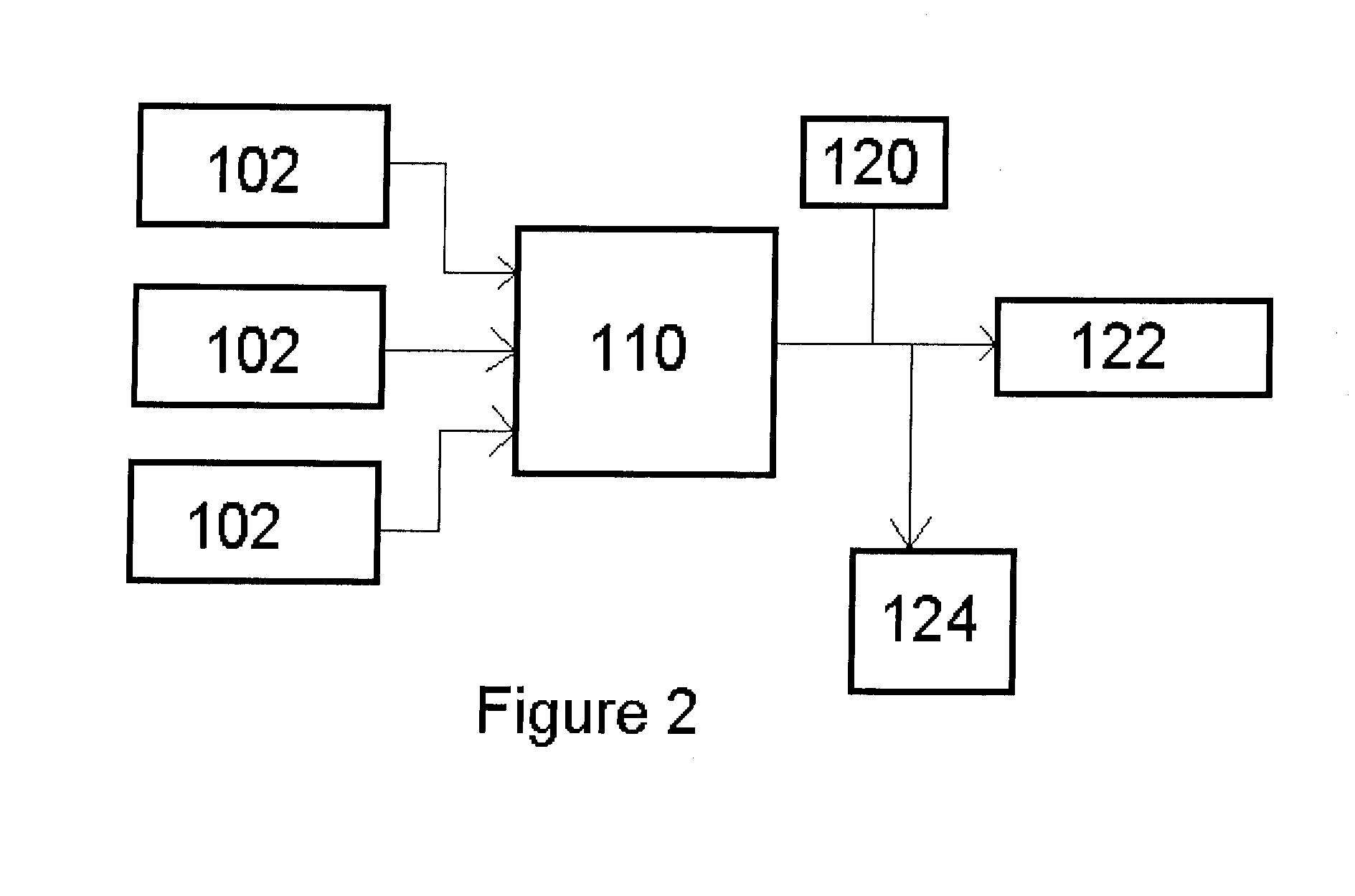System and method for locating, measuring, counting, and aiding in the handling of drill pipes
a technology for locating, measuring, counting, and drilling pipes, which is applied in the direction of image enhancement, survey, and borehole/well accessories. it can solve the problems of significant disruption to drilling activities, significant disruption of drilling activities, and difficulty in measuring a large portion of rig activities and sensing problems, so as to reduce the risk of pipe tally errors, save drilling time and cost, and more accurate technique for generating
- Summary
- Abstract
- Description
- Claims
- Application Information
AI Technical Summary
Benefits of technology
Problems solved by technology
Method used
Image
Examples
Embodiment Construction
[0010]The “Pipe Tally System” system, PTS, consists of several parts. In one preferred embodiment, one or more video cameras 102 positioned so as to be able to see the drilling pipe 106 as it is attached to, or removed from the drill-string 107. Depending on requirements, one camera 102 at sufficient distance from the bore-hole 108 to view the entire pipe 106 segment at once may be sufficient, otherwise two or more cameras 102 may be used, each of which may only see part of the pipe 106 as it is entered into the drill-string 107, but information or data 150 can be aggregated across the different cameras using the known camera positions and poses.
[0011]Each camera 102 may contain or be connected to a computer 110 which detects and localizes pipes 106, the iron roughneck 116, the elevator 118, or other relevant components. Different regions of interest for each object type can be defined using the known camera 102 geometry, or using user-inputs. Since the cameras 102 are at known dist...
PUM
 Login to View More
Login to View More Abstract
Description
Claims
Application Information
 Login to View More
Login to View More - R&D
- Intellectual Property
- Life Sciences
- Materials
- Tech Scout
- Unparalleled Data Quality
- Higher Quality Content
- 60% Fewer Hallucinations
Browse by: Latest US Patents, China's latest patents, Technical Efficacy Thesaurus, Application Domain, Technology Topic, Popular Technical Reports.
© 2025 PatSnap. All rights reserved.Legal|Privacy policy|Modern Slavery Act Transparency Statement|Sitemap|About US| Contact US: help@patsnap.com



